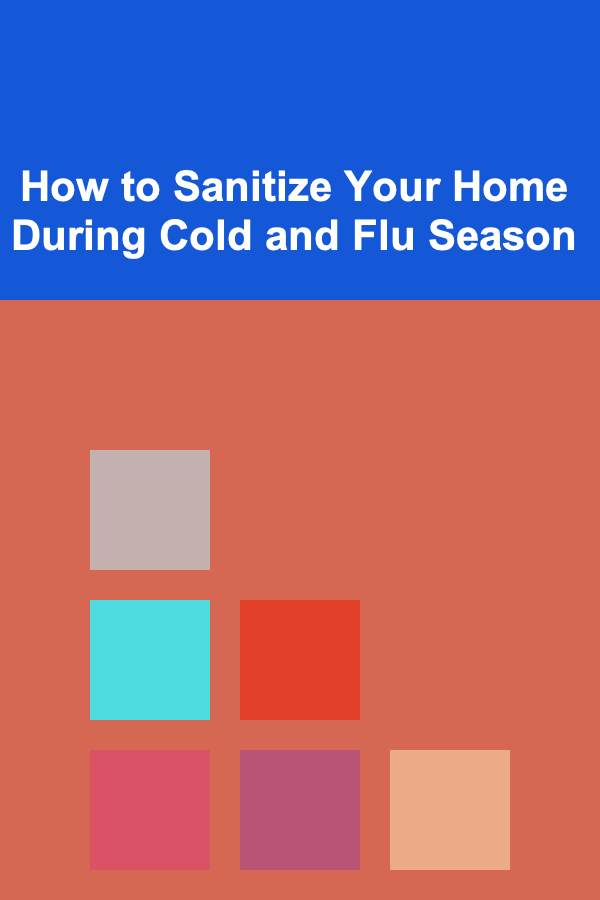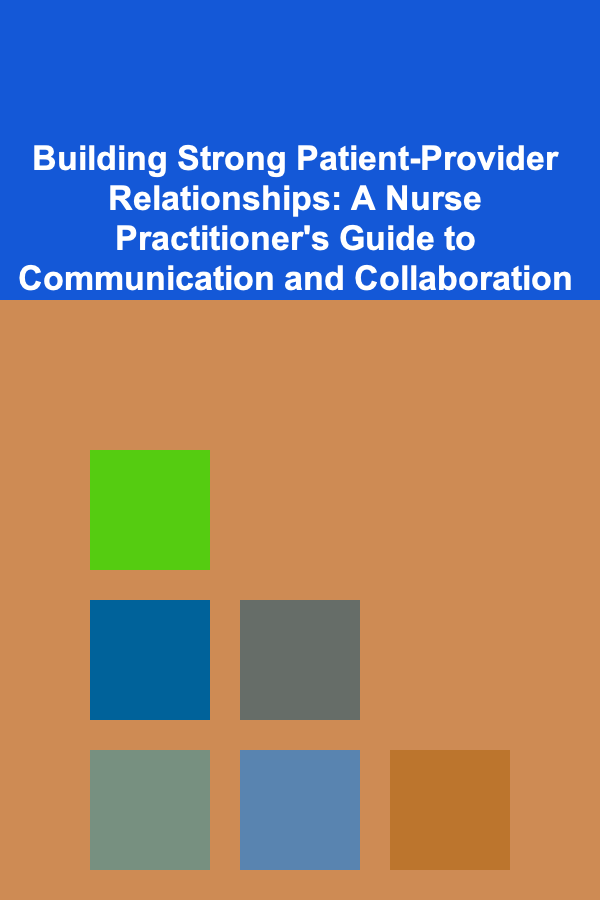
How to Sanitize Your Home During Cold and Flu Season
ebook include PDF & Audio bundle (Micro Guide)
$12.99$8.99
Limited Time Offer! Order within the next:

When the cold and flu season rolls around, the risks of infection increase as viruses spread rapidly in colder, confined spaces. With people gathering indoors, viruses like the flu and the common cold can be passed from person to person quickly. Keeping your home sanitized during these months is crucial in preventing the spread of germs and ensuring the health and well-being of you and your family.
Sanitizing your home doesn't just mean wiping down counters or spraying air fresheners. It requires a thorough and systematic approach to cleaning that tackles the germs and bacteria in areas where they are most likely to spread. This guide will walk you through effective strategies for sanitizing your home during cold and flu season, focusing on the right cleaning products, techniques, and areas to target.
The Importance of Sanitizing Your Home
The cold and flu season can bring various challenges to maintaining a healthy household. Here's why it's especially important to sanitize your home:
1. Preventing the Spread of Germs
Viruses and bacteria that cause colds and flu are easily transmitted through the air and by touch. Surfaces that are frequently touched---such as door handles, light switches, and countertops---are prime locations where germs can linger. By sanitizing these areas regularly, you reduce the chances of coming into contact with infectious agents that can lead to illness.
2. Protecting Vulnerable Family Members
Families often have members who are more susceptible to illness, such as children, elderly relatives, or individuals with compromised immune systems. Maintaining a sanitized environment helps protect those who are more vulnerable to infections from being exposed to harmful pathogens.
3. Improving Overall Health
A clean home improves the overall health of the household by reducing the number of airborne and surface germs. This leads to fewer sicknesses and a healthier living environment, contributing to a more comfortable and safer space for everyone.
Essential Cleaning Products and Tools for Sanitizing Your Home
Effective sanitization requires the right tools and cleaning products. Here's a breakdown of the essentials you should have on hand:
1. Disinfecting Wipes or Sprays
Disinfecting wipes or sprays are perfect for quickly sanitizing high-touch areas. Choose products that are labeled as effective against cold and flu viruses, such as those containing at least 70% alcohol or disinfectants with EPA-registered claims. These are ideal for wiping down surfaces like counters, doorknobs, and light switches.
2. All-Purpose Cleaner
An all-purpose cleaner can help tackle general messes and dirt in the home. For areas that don't require disinfecting but need a good clean (like kitchen counters or bathroom sinks), an all-purpose cleaner will do the job. Look for cleaners with antibacterial properties.
3. Microfiber Cloths
Microfiber cloths are designed to trap and lock in dirt, dust, and germs, making them ideal for sanitizing. They can be used on almost any surface, and their ability to capture fine particles makes them an effective tool for sanitizing.
4. Broom, Dustpan, and Mop
Regular sweeping and mopping are essential to maintaining a clean home. Brooms and mops that are easy to clean and durable are perfect for this purpose. Use a mop with a microfiber head, as it helps trap dust and dirt effectively. When mopping, ensure you're using a disinfectant solution that's safe for floors.
5. Vacuum Cleaner with HEPA Filter
A vacuum with a HEPA filter is essential for trapping fine particles, including dust, dirt, and allergens, that could otherwise circulate in the air. A vacuum cleaner with strong suction power will help ensure that your floors and carpets stay clean and free from germs.
6. Hand Sanitizer
In addition to sanitizing your home, it's important to sanitize your hands regularly. A hand sanitizer with at least 60% alcohol content can effectively kill germs and prevent the spread of illness.
7. Essential Oils or Air Purifiers
To improve air quality and eliminate germs in the air, consider using an air purifier with a HEPA filter. Alternatively, essential oils such as eucalyptus, tea tree, or lavender can be used in a diffuser to help kill airborne germs naturally.
Key Areas to Sanitize During Cold and Flu Season
Certain areas of your home are more prone to harboring germs and bacteria than others. By focusing your cleaning efforts on these high-risk spots, you can reduce the spread of viruses and make your home safer for everyone.
1. High-Touch Surfaces
High-touch surfaces are the prime locations where germs can linger. The following areas should be sanitized at least once a day during the cold and flu season:
- Doorknobs and Handles: Every time someone enters or leaves a room, germs are transferred to doorknobs and handles. Disinfect these areas frequently.
- Light Switches: People constantly touch light switches, making them a breeding ground for germs. A quick wipe with a disinfectant wipe or spray can help reduce the spread of germs.
- Remote Controls and Electronics: Phones, TV remotes, and other electronic devices are frequently handled and can carry a lot of germs. Wipe them down with an alcohol-based wipe or cleaner to disinfect.
- Countertops: Kitchens and bathrooms often become hotspots for germs. Ensure to wipe down counters in these areas after every use.
- Tabletops: Dining tables and coffee tables are often touched by everyone. Wipe them down regularly with a disinfectant.
2. Kitchen and Bathroom
The kitchen and bathroom are critical areas to sanitize regularly due to the frequent presence of moisture and food particles that can promote bacterial growth.
- Kitchen Sink: Your kitchen sink is home to bacteria, especially after food preparation. Clean and sanitize it daily to prevent the spread of germs.
- Dishwashing Area: Wash dishes frequently, and wipe down any surfaces where food particles might linger, such as countertops and dish racks.
- Bathroom Sink, Faucets, and Toilet: The bathroom is another area that requires special attention. Sanitize faucets, sink handles, and toilet seats regularly to minimize the risk of infection.
- Towel and Hand Drying Areas: Towels and washcloths are often used and can carry germs. Replace hand towels frequently and launder them in hot water to kill bacteria.
3. Bedrooms
While you may not think of the bedroom as a high-risk area, it's still important to clean frequently, especially if someone in the house is sick.
- Bed Linens: Wash bed linens, pillowcases, and blankets regularly in hot water. Bedding can harbor germs, especially if someone has been sick in the bed.
- Personal Items: Phones, laptops, and tablets that are used in bed should be wiped down frequently with disinfectant wipes.
4. Air Quality and Ventilation
Viruses can linger in the air, so improving your home's air quality is essential during cold and flu season.
- HVAC System: Ensure your HVAC system is working properly and that filters are clean. Use an air purifier with a HEPA filter in high-traffic areas or rooms with poor ventilation to capture airborne particles.
- Windows: Open windows when possible to let fresh air circulate through your home. This will help to reduce the concentration of airborne germs.
5. Flooring
Floors are often overlooked when it comes to sanitizing, but they can harbor germs and bacteria, especially in areas with heavy foot traffic.
- Hard Floors: Sweep and mop hard floors frequently using disinfectant solutions.
- Carpets: Carpets can trap dust, dirt, and germs. Vacuum frequently with a HEPA-filtered vacuum, and consider having your carpets professionally cleaned during cold and flu season.
6. Pet Areas
If you have pets, make sure to sanitize areas they frequent, such as pet beds, food bowls, and litter boxes. Germs can be transferred from pets to humans, so regular cleaning is essential.
General Tips for Reducing Germs in Your Home
Besides regular cleaning, there are several habits and practices you can incorporate into your daily routine to reduce the spread of germs in your home.
1. Encourage Hand Washing
The simplest and most effective way to reduce the spread of germs is to wash hands regularly. Encourage everyone in your household to wash their hands for at least 20 seconds, especially after coughing or sneezing, before meals, and after using the bathroom.
2. Cover Your Cough and Sneeze
Teach family members to cover their mouths with a tissue or their elbow when they cough or sneeze. Dispose of used tissues immediately and wash hands afterward.
3. Use Disinfectant for Frequently Touched Items
Disinfecting wipes or sprays should be kept in areas where people are most likely to touch surfaces, like the kitchen and bathroom. Encourage family members to wipe down frequently touched items throughout the day.
4. Keep Sick Individuals Isolated
If someone in your household is sick, encourage them to stay in a separate room as much as possible, and avoid sharing towels, bedding, and utensils. If possible, sanitize their environment more frequently to minimize the risk of spreading germs to other areas of the home.
Conclusion
Sanitizing your home during the cold and flu season is essential for maintaining a healthy and safe environment for you and your family. By focusing on high-touch surfaces, cleaning key areas like the kitchen and bathroom, and improving your home's air quality, you can significantly reduce the spread of germs. Incorporating regular cleaning habits, encouraging good hygiene practices, and using the right tools and cleaning products will help ensure that your home stays germ-free and everyone remains healthy during the colder months. While you can't eliminate every risk, the steps you take to sanitize your home will go a long way in preventing illness and keeping your family safe.
Reading More From Our Other Websites
- [Personal Care Tips 101] How to Train for a Marathon as a Beginner
- [Skydiving Tip 101] Top & Safety Tips Every Tandem Skydiver Should Know
- [Star Gazing Tip 101] Night Sky Adventures: Simple Star‑Gazing Projects for Kids
- [Home Renovating 101] How to Renovate Your Home with DIY Projects
- [Personal Care Tips 101] How to Choose Body Spray for a Relaxing Evening or Night Out
- [Star Gazing Tip 101] Beyond the Stars: The Science of How Constellations Are Formed and Categorized
- [Organization Tip 101] How to Keep Your Outdoor Furniture Organized and Protected
- [Personal Finance Management 101] How to Build an Emergency Fund Without Feeling Overwhelmed
- [Personal Care Tips 101] How to Choose the Best Razor for Sensitive Skin
- [Organization Tip 101] How to Create a Backup Plan for Emergency Pet Supplies

10 Effective Ways for Saving Money on Transportation Every Day
Read More
Building Strong Patient-Provider Relationships: A Nurse Practitioner's Guide to Communication and Collaboration
Read More
How to Explore the Rainforests of Costa Rica
Read More
How to Plan the Perfect Party on Short Notice
Read More
Why Setting Up a Donation Station Can Help You Stay Organized
Read More
How to Discover Series with Mind-Bending Concepts
Read MoreOther Products

10 Effective Ways for Saving Money on Transportation Every Day
Read More
Building Strong Patient-Provider Relationships: A Nurse Practitioner's Guide to Communication and Collaboration
Read More
How to Explore the Rainforests of Costa Rica
Read More
How to Plan the Perfect Party on Short Notice
Read More
Why Setting Up a Donation Station Can Help You Stay Organized
Read More